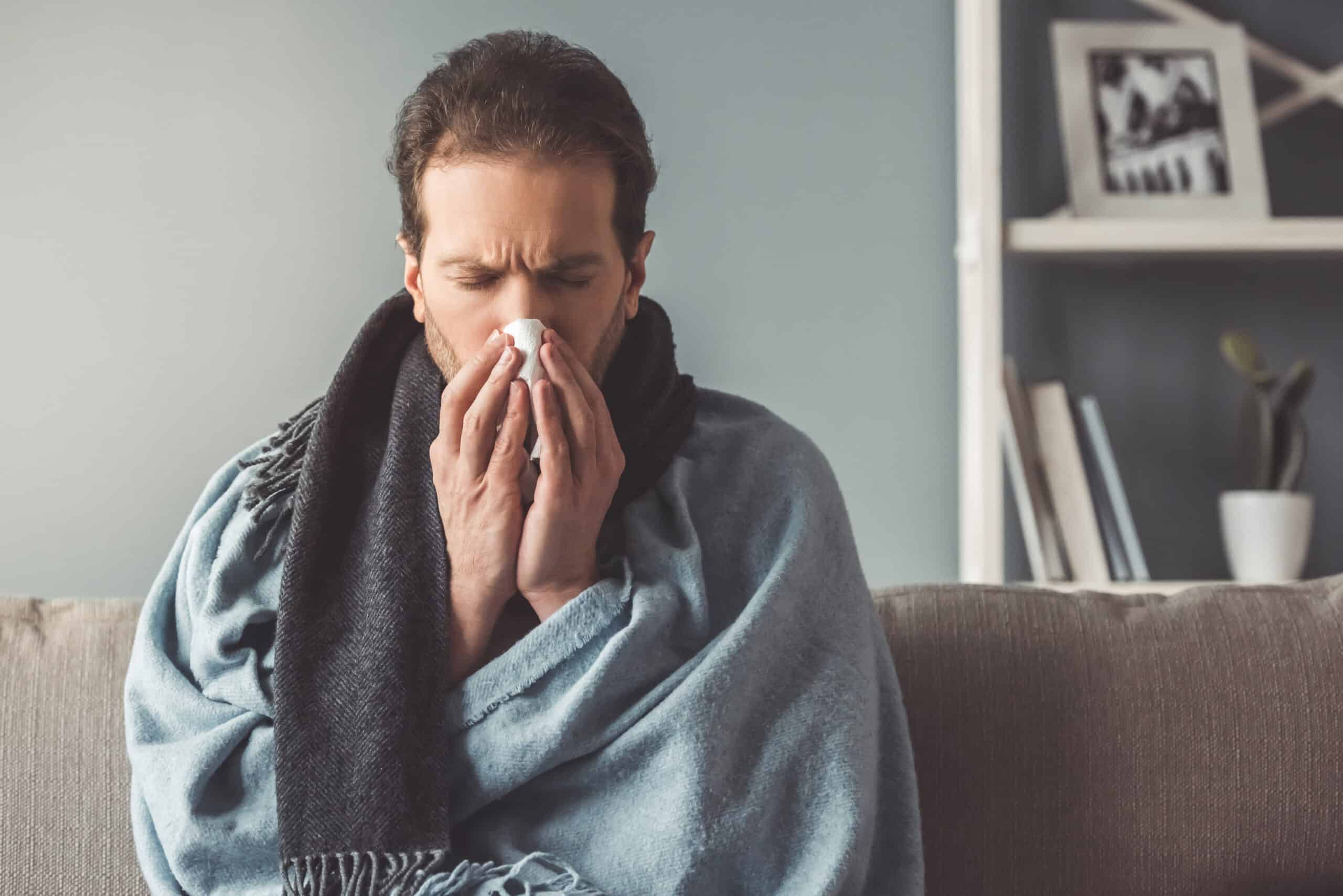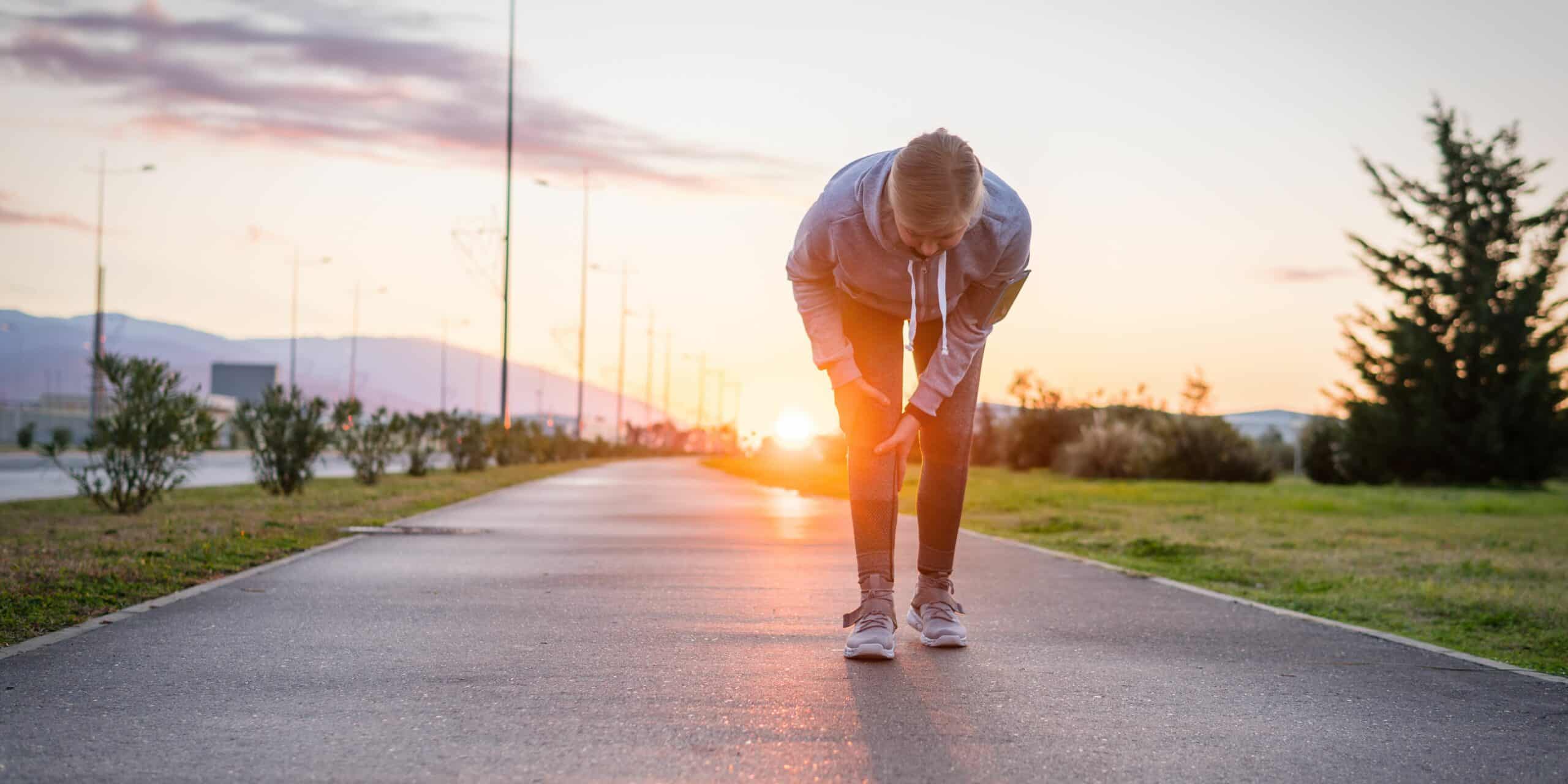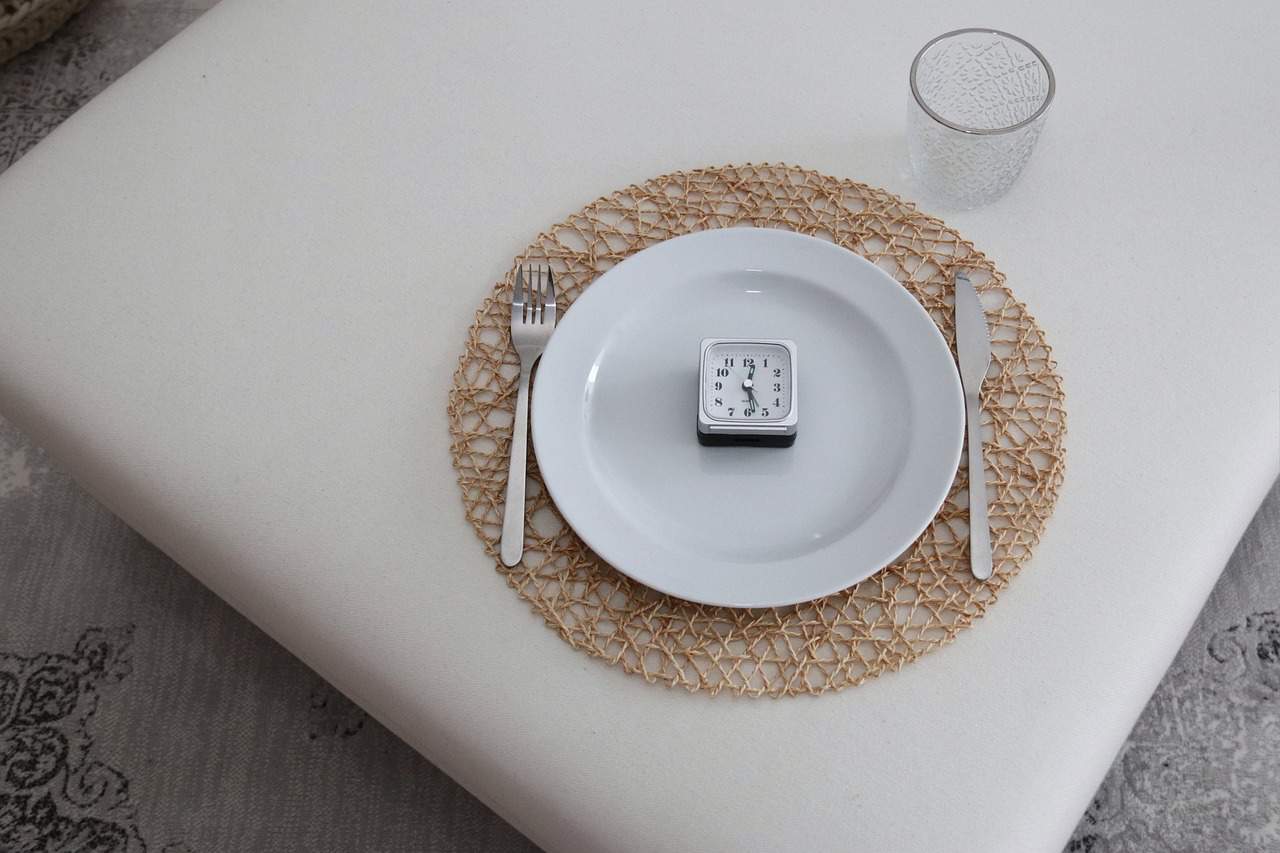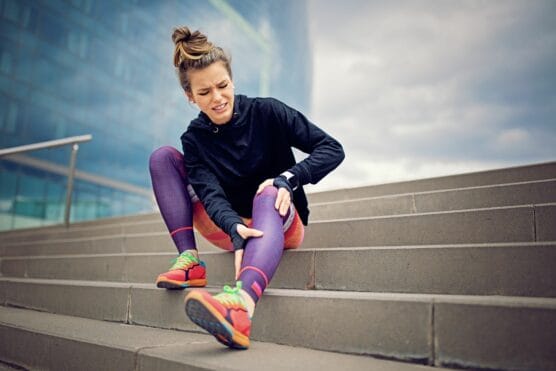If you’ve ever flipped through the pages of Runner’s World or watched elite runners in a marathon, you might have an idea of what a runner’s body looks like. Most envision a long, lean athlete with toned muscles.
While some runners do look this way – plenty do not!
There are many different versions of a “runner’s body” based on what type of running you do, your genetics, your cross-training routines, and more.
In this article, we’ll explore the different types of runners bodies, along with the benefits to a body that come from running, how a runner’s body compares to a gym-goer’s body, and much more.
What Does a Runner’s Body Look Like?
This question doesn’t have one simple answer. The reality is runners’ bodies come in every size, shape and color—just like any other athlete.
Your natural physique plays the largest role in the appearance of your body as a runner. While hitting the pavement may make you leaner than you are today before running, it won’t magically make you taller.
Other factors that will influence your look include your diet, health conditions, and the type of running you’re doing. For women, fluctuations in menstrual cycle can also influence the look of their body throughout the month.
That said, there are common physical characteristics that match the expectation of the body type of elite runners.
Why would a certain body type be more common among elite runners? Certain biological factors like body proportion, lung, and cardiovascular capacity provide a more natural fit for distance running . than others due to the type, frequency, and intensity of workouts being required at a professional level. The sport tends to mold bodies in specific ways when repeated in the ways elite runners do.
Many veteran long-distance runners tend to be lean, often with a toned core and muscular legs. Runners who participate in short-distance running have a fuller, more muscular build instead.
Types of Runner’s Bodies
The type of running you do will affect the build of a runner.
The act of sprinting requires explosive power and a low center of gravity in order to achieve quick starts and high top speeds. Elite sprinters often have more well-developed, prominent muscles than distance runners with, on average, lower centers of gravity.
One of the most successful sprinters in American history is Michael Johnson famous for the golden Nike racing spikes. During his professional running career, Michael was 6’1” (1.85 meters) and 175 lbs (80 kg).
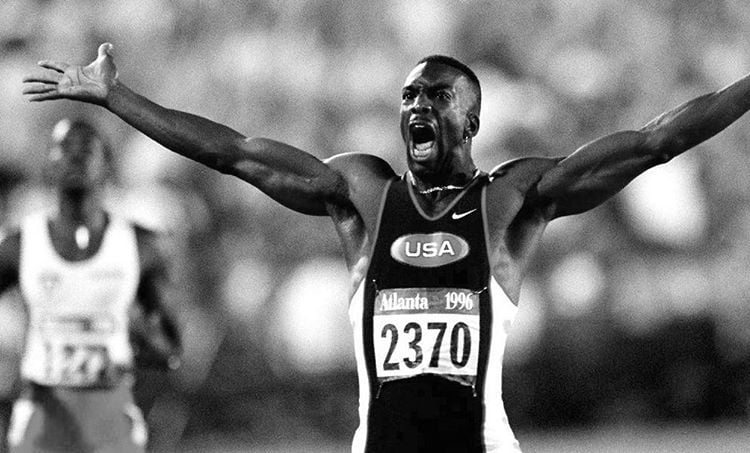
You can watch a video of Michael Johnson explain his sprinting running form. He also compares his running form to the biomechanics of a larger runner like Usain Bolt.
Compare this to a marathon runner’s body. The long distance runner body will tend to have less muscle mass and a leaner physique overall. An optimal long distance running body would be a lighter, shorter upper body with proportionately longer legs.
Eliud Kipchoge, the only runner to have broken the two-hour marathon, stands at just 5’6” (1.67 meters) and 115 lbs (52 kg).
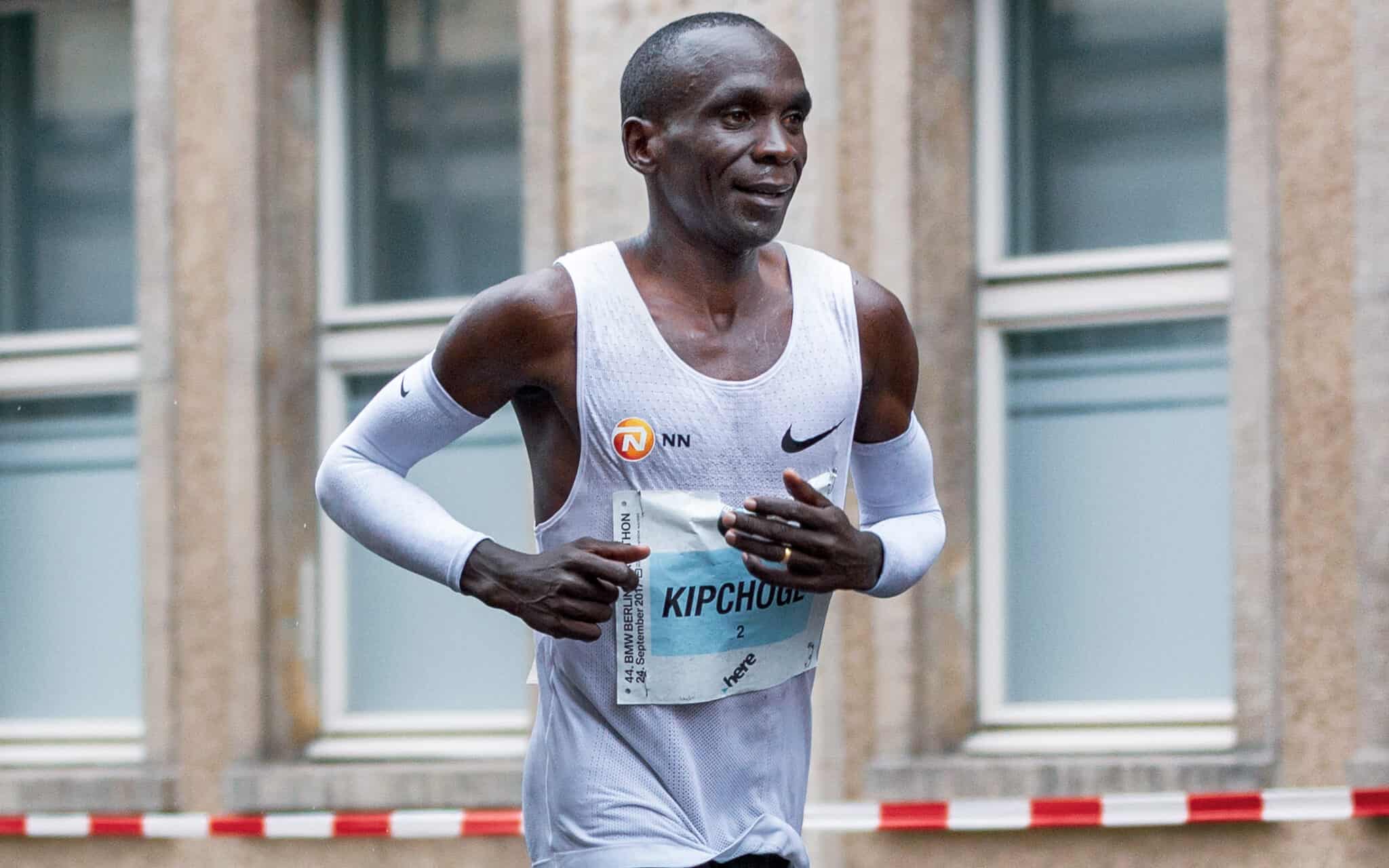
Shalane Flanagan, Olympic medalist in the marathon, stands at just 5’5” (1.6 meters) and 106 lbs (48 kg).
Groupers, also known as middle-distance runners, often have a combination of sprinters’ qualities and endurance runners’ qualities. They may be lean with well-developed leg muscles.
One quality that is not characteristic of any running type? Overly-developed, broad upper body muscles. Star runners like Usain Bolt cross-train with weights. They do so to increase their muscle density for greater mass which can yield higher top sprinting speeds.
These are differences
Male vs Female Runner’s Body
Because of differences in hormones, the body composition of male and female runners may differ. A man who runs the same distance as a woman, on average, may have lower amounts of body fat than women who run. Men may also have a higher percentage of total weight muscle mass than women.
Men and women also have different biomechanics and stride lengths, leading to differences in performance. This can also lead to different injury patterns, with women more prone to some injuries due to hormonal factors.
Runner’s Body vs. Gym Body
A runner’s body is not “better” than a gym-goer’s body, just like a gym-goer’s body is not better than a runner’s.
Both physiques are representative of someone who puts time and effort into their physical health—which is always admirable!
In an ideal training environment, you would have a combination of both a runner and a gym goer’s physique. The human body benefits most from a combination of steady-state zone 2 cardio (recommended 150 to 300 minutes per week) for heart health and isometric strength training for stability and longevity (twice per week).
Athletes who consistently opt for aerobic exercise over weight or resistance training are likely to have a lean body type with a lower body fat percentage and toned legs.
Conversely, many seasoned gym-goers have more visible muscle definition and may or may not be as lean as some runners.
While runners are focused on optimizing their bodies for efficiency, strength trainers are focused on muscle hypertrophy for physical definition from head to toe.
What is the Effect of Running on Your Body?
Any aesthetic benefits of a runner’s body pale in comparison to what running does for your physical health. What are the benefits and drawbacks of running on your body?
Positive Effects
Regular runners enjoy incredible health benefits, including substantial improvements to cardiovascular health and reduced risk of chronic disease.
Studies are ongoing, but it looks promising that running may also help improve bone density.
Anyone who hits the pavement regularly also knows that running has been proven to be excellent for improving mental health thanks in part to all of the endorphins it generates.
Regular running has also been proven to correspond with reduced blood pressure, reduced body weight, and an improved resting heart rate.
How Does Running Effect Your Knees
If running has proven to be beneficial for joint health and bone density, is it also true running is bad for your knees?
Running is actually good for your knees. With correct form, running will decrease the risk of arthritis. Due to more fluid moving into your knee joints to keep them lubricated during runs which bulks up cartilage and staves off knee arthritis.
Running may cause injury to your knees if you don’t strengthen supporting running muscles like the gluteus major, quad and hamstring muscles. As a joint, the knee doesn’t have the ability to stabilize itself.
Instead, the knee joint relies on the muscles around it to keep it stable under the pressure of the body’s weight while running.
The other reason many believe running to be bad for your knees is caused by incorrect running form called overstriding. Overstriding occurs when your foot lands in front of your knee which, then applies a breaking force which your knee must absorb.
To prevent overstriding, focus on a forward lean and increase your running cadence to between 160 and 180 bpm.
Related: How To Prevent Runner’s Knee
Negative Effects
Of course, there are two sides to every coin. Running may come with downsides just like every other form of exercise.
Muscle imbalances and risk of injury are possible when you train improperly, push yourself too hard, or simply have an accident.
There’s controversy over whether running leads to joint deterioration and in some rare cases it may lead to cardiovascular damage. Like any other athletic endeavor, the name of the game is to use moderation, common sense and listen to your body when it needs a break.
You may see more of these effects on the body for individuals start running at an older age.
There has also been recent beauty trends of runner’s face which is the leathery, sagging and aged appearance of a face caused by the overexposure to training in the sun. The remedy is regular sunscreen application and sun-protective clothing.
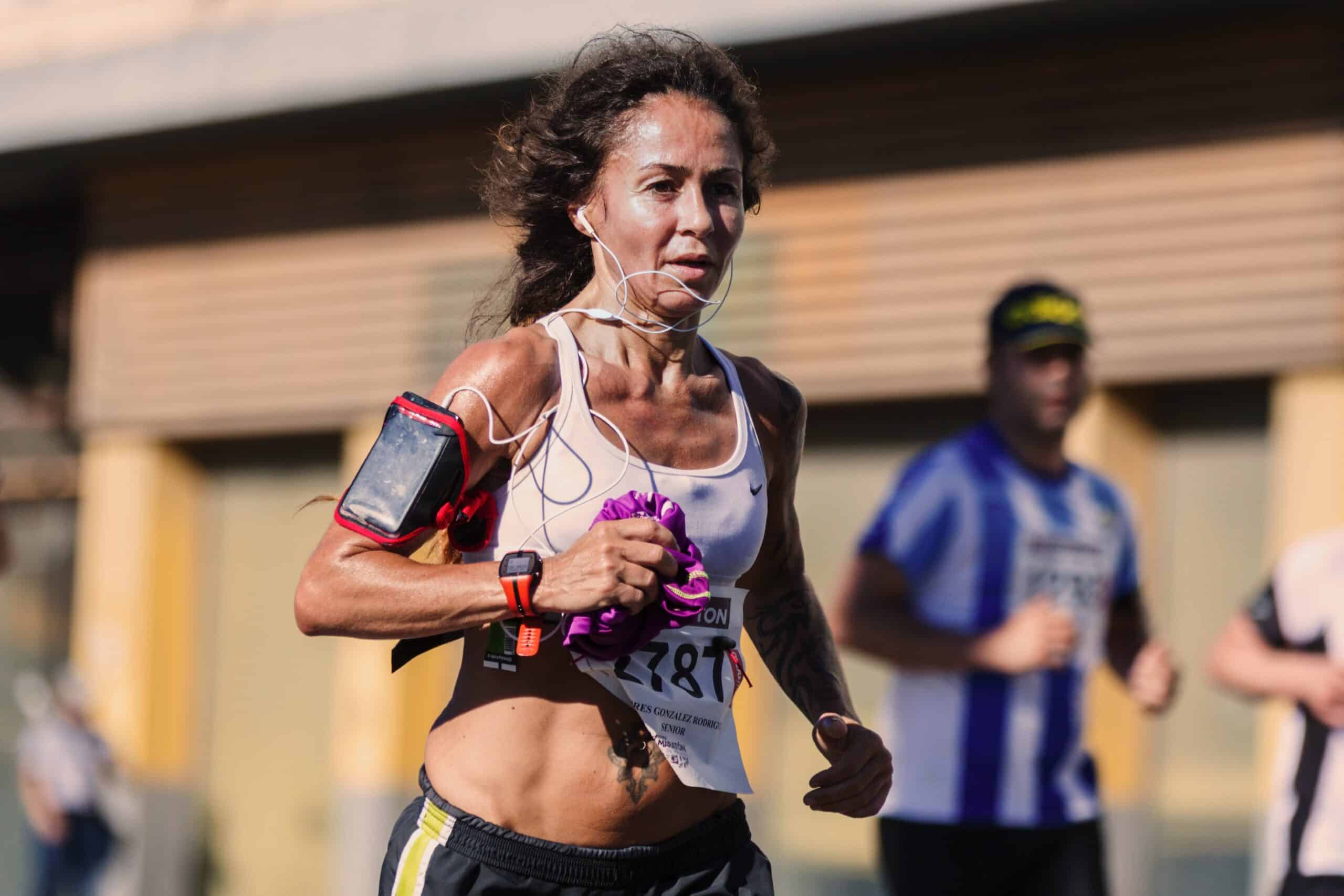
How Do You Get a Runner’s Body?
The answer to this question is fairly simple: in order to get a runner’s body, you must run!
Those trying to emulate a distance runner’s body by drastically limiting their caloric intake, but not actually running, will not get the same results, like a toned muscle and core. (Nor will they reap the many physical and mental health benefits of running.)
If you’d like to start running regularly, do yourself a favor and get a checkup with your doctor first to make sure everything’s A-okay. Certain medical conditions (such as some cardiovascular or joint conditions) may make running ill-advised.
Once you’ve got the green light from your doctor:
- Invest in quality running gear (especially running shoes). You want to start off on the right foot (literally) and avoid injuries, so this isn’t the time to pull out your old sneakers from high school gym class.
- Next, set a realistic goal. You’re not going to be running a half marathon next week (or even next month). It takes your body time to acclimate to the demands of running, and the more you pace yourself and listen to your body, the more you’ll succeed in the long run.
- Download a training plan (or app). While you can always start your running journey by intuitively running and walking when you’re tired, it helps to have a structured training plan to guide you along. Running apps like Runna are designed to get you out of your home and running at a measured, healthy pace.
- Incorporate cross-training. As you develop a healthy running routine, you’ll want to include elements of cross-training to make sure your body stays strong and flexible. Even a few reps of squats throughout the week can be beneficial.
Finally, don’t forget to warm up and cool down with each run. Mix your high-intensity runs with lower-intensity activities, like yoga throughout the week. This will help you prevent injury and feel good in your body every day.
For a high-quality running coach right in your pocket, using code HALF, you’ll receive 2 weeks of Runna premium training plans for free.
How Does Running Change Your Body?
If you have started your running journey, it’s likely you’ve seen some changes in your body.
It’s possible that running has increased your metabolism and you’ve begun to burn more calories, leading to weight loss.
You may also notice more muscle tone in your legs and core—especially your quadriceps, hamstrings, calves, glutes and abs.
You might find that you feel lighter, happier and more energetic, have more energy, and/or are sleeping better at night.
As the months progress, you may find that you’re getting sick less frequently, as running can provide a nice boost for your immune system.
It’s possible you’ll also crave greater amounts of food, especially carbohydrates. This is natural and it’s important to eat enough food to support your body’s increased fat burning and calorie expenditure.
You may also notice an improved sense of body image from taking regular care of your body and providing healthy physical challenges for yourself.
Can You Get a Nice Body From Running?
Beauty is in the eye of the beholder. A “nice body” is certainly a relative term. While some folks may admire the aesthetics of a runner’s body, others may find different physiques more attractive.
At the end of the day, don’t choose your sport or hobby based on how it makes your body look. But if you’re interested in running for the health and joy of it and also enjoy looking lean, then yes—you may feel that you get a “nice body” from running.
It’s worth reiterating that you won’t get the full head-to-toe toned look you see on runners in the media if all you do is run. In order to achieve that look, you’ll need to cross-train with weighted yoga, strength training, or other workouts that help build muscle.
What Are Runner Legs?
You may have heard folks specifically aspire to have runners’ legs. They’re likely referring to the toned quads, hamstrings, calves and glutes you get from running regularly. And yeah, they’re pretty nice!
Final Thoughts
At the end of the day, a runner’s body is a nice thing to have—if you enjoy and feel good while running! Keep in mind, the runner’s physiques you see in the media or at the Olympics are almost always the result of a combination of running and other training modalities, like weight lifting or HIIT workouts. So be mindful of your goals and work out accordingly.
Whatever you do, don’t attempt to get a runner’s body without running by drastically cutting carbs, or going to other extremes to alter your body weight. The real benefit of a runner’s body is increased wellness, and not meeting your caloric needs will not benefit your health.
If you’re brand new in your pursuit of a runner’s body, we wish you luck as you hit the pavement. Be sure to listen to your body, practice moderation and most of all, have fun!


